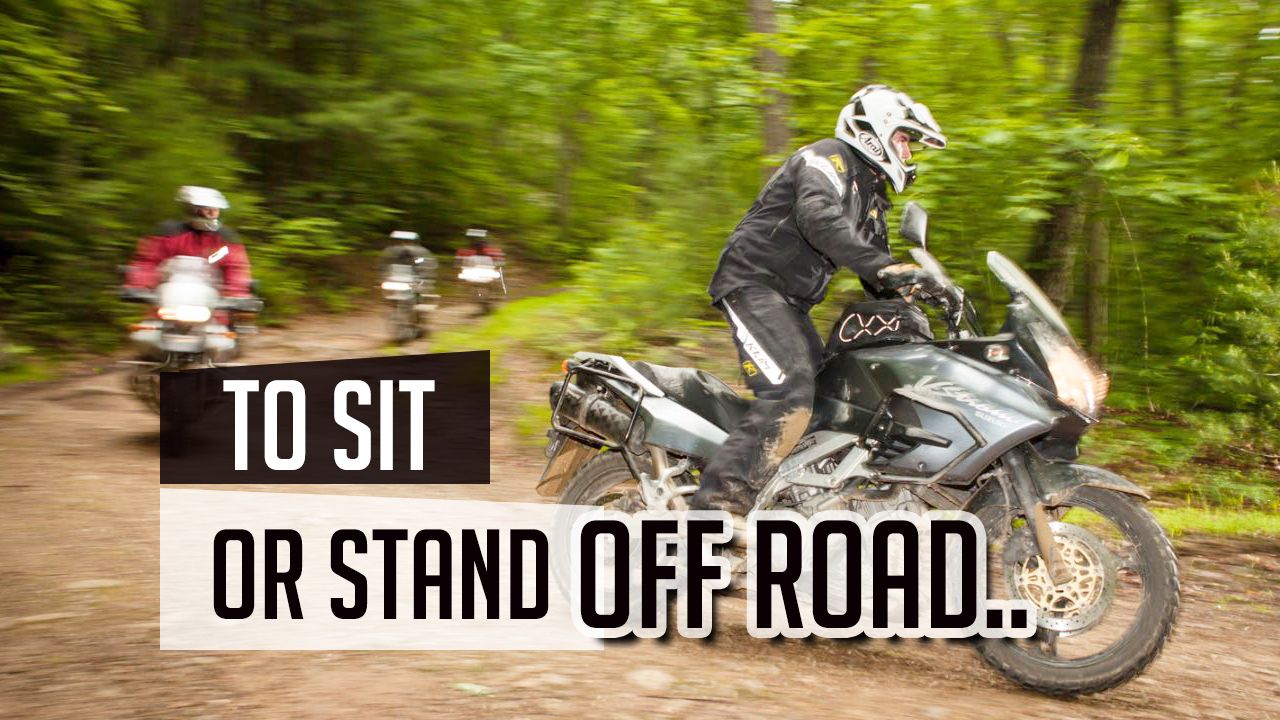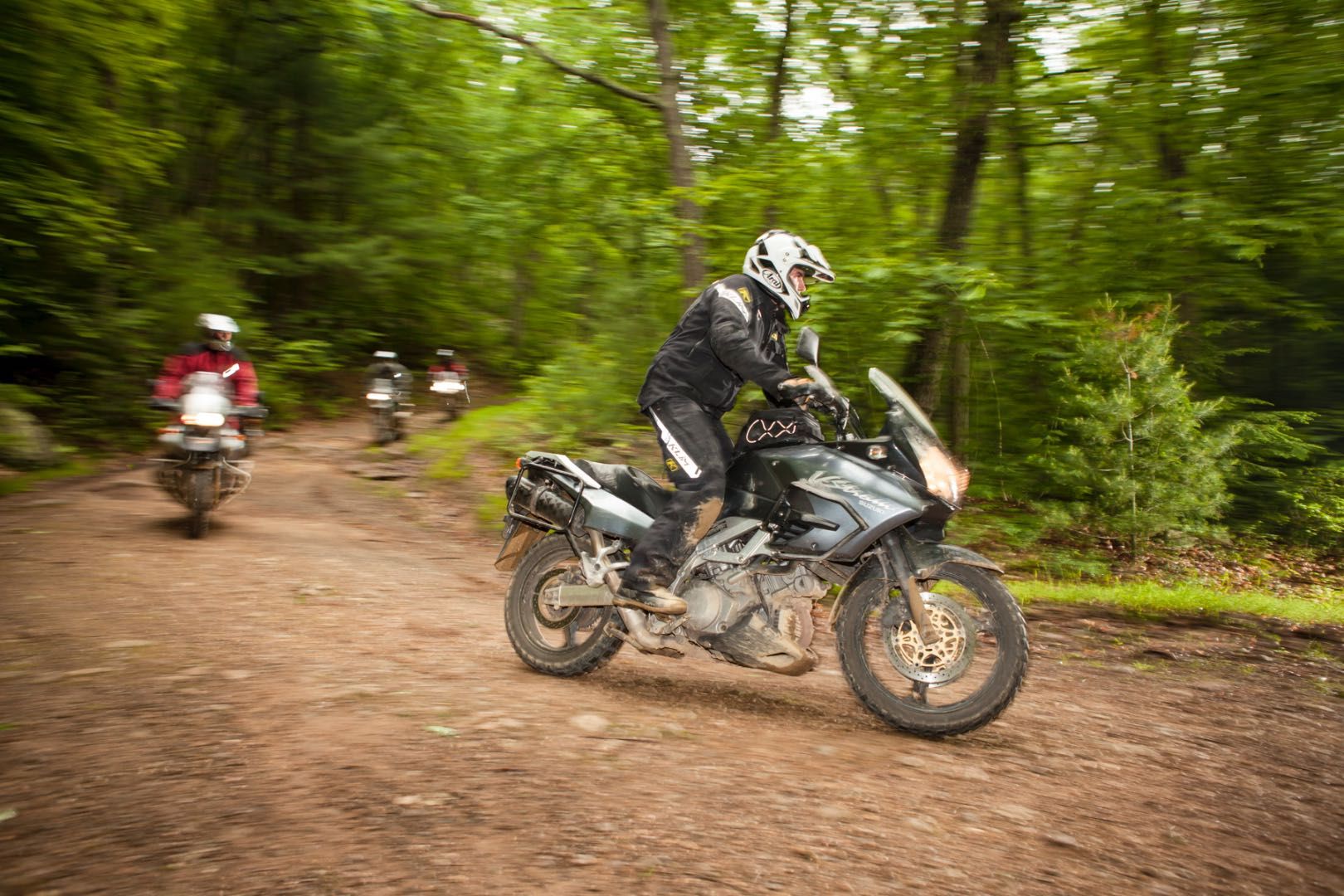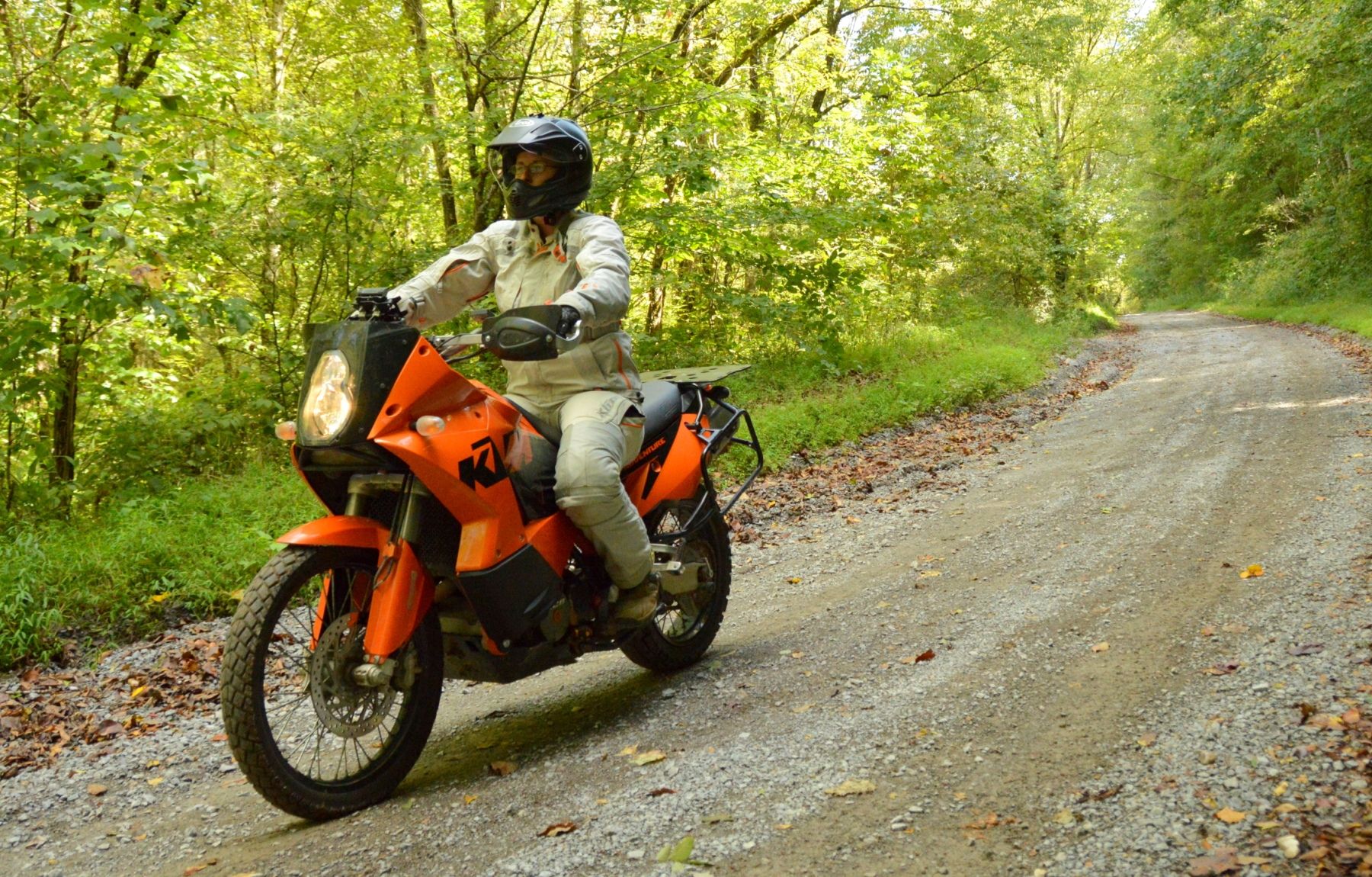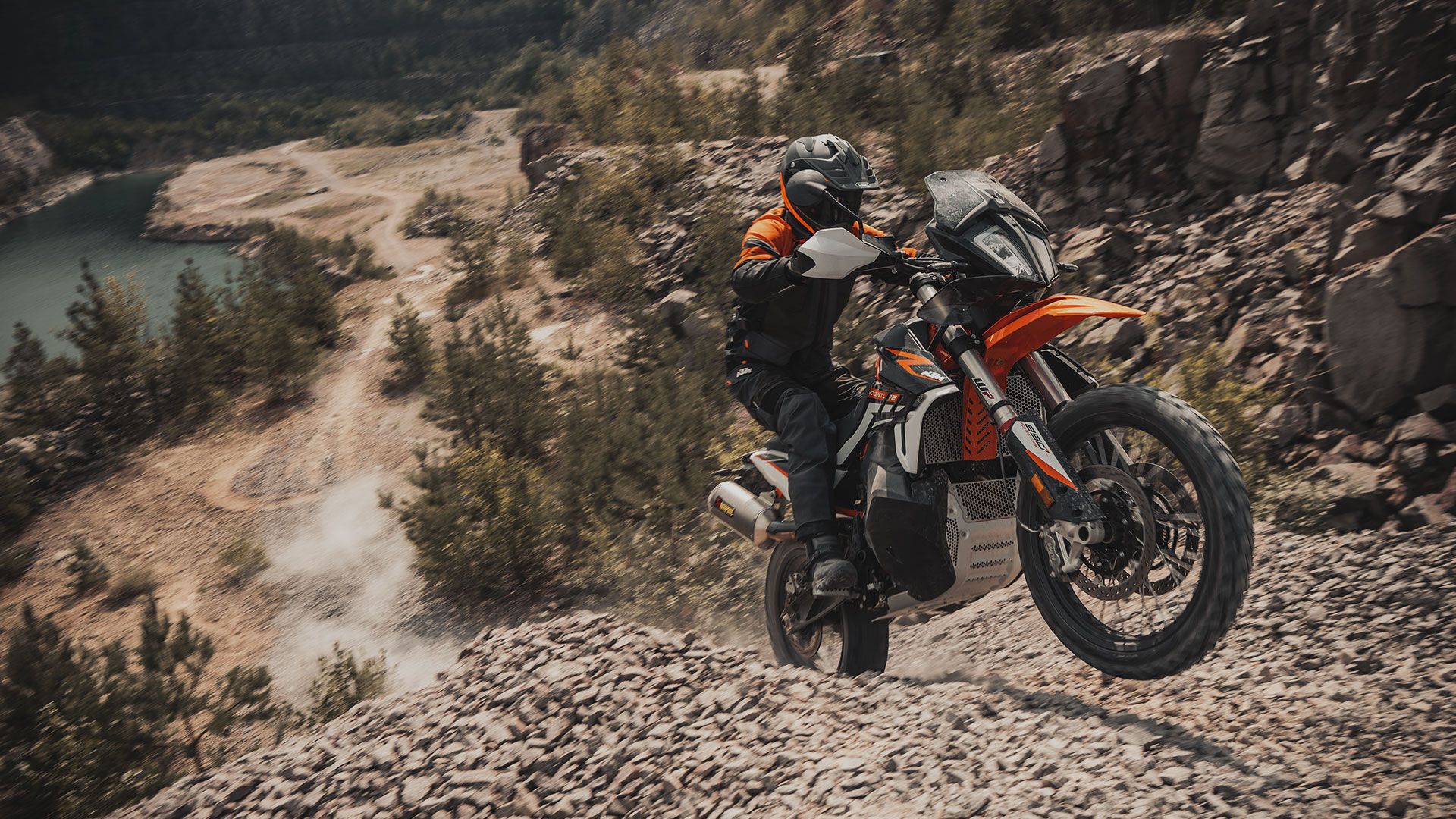One of the arguments that always start when riding off-road is whether to stand on the foot pegs or sit on the seat. Which is right and which is wrong?
Do I Stand Or Sit When Riding Off-Road?
Adventure bikes and adventure riding are the big ticket items for most motorcycle manufacturers nowadays: even Harley Davidson has got in on the act. With this rise in popularity has come debate on the techniques and skill required to ride competently off-road and one of the most vociferous arguments is around whether to stand or sit while riding off-road.
Standing up on an adventure bikes is one of the most polarising practices: non-adventure riders pour scorn on adventure riders for riding along streets and through parking lots standing on the pegs and it is true that this is an unnecessary trait of showing off.
But off-road, standing on the pegs through tricky sections is actually the best way of doing it. And here's why.
Firstly, you don't always have to stand. If you're riding along a smooth dirt road, then sitting down is perfectly all right. Not only will fixing your body mass to the bike not affect the behaviour of the bike, but it will also allow you to relax and conserve energy.
Standing comes into its own when the going gets technical. Contrary to popular myth, standing does not lower the centre of gravity of the bike, just because all your weight is on the low-mounted foot pegs. By standing you are actually raising the C of G because the bulk of your mass is way above the motorcycle.
So, why stand? Well, for starters, your vision forward is greatly enhanced, which enables you to plot your path through the section and forewarns you of any obstacles that might need special attention.
By standing, you are freeing up the bike to move around as it needs to underneath you, while you still retain control through the four contact patches of your feet and hands. You are also insulated by the springs that are your legs from heavy jolts as the bike rides over rough terrain.
In turns, especially on slippery surfaces, you can weight the outside foot peg and push you knee into the tank, which will squash the tyres into the ground and give you better grip. The same applies when riding along a sloping bit of land: by weighting the foot peg on the downhill side of the bike, you are again pushing the tyre into the slope for more grip.
Standing up also allows you to move your weight forward or backwards, depending on whether you are riding downhill or uphill respectively. When riding slow, it can also help you to balance the bike by moving your body weight around.
One important thing to remember is to keep the hands loose on the 'bars. This is done by gripping the tank with your knees, which frees up the arms and hands to control the bike: if you're locking up the arms and gripping tightly onto the 'bars, then you might as well be sat down. The idea, as I mentioned, is to allow the bike to move around underneath you and use your weight to help find grip.
Standing up might feel unnatural and more risky than sitting down but it's a useful technique to practise. Just don't feel you need to do it in the parking lot of your local shopping mall!





